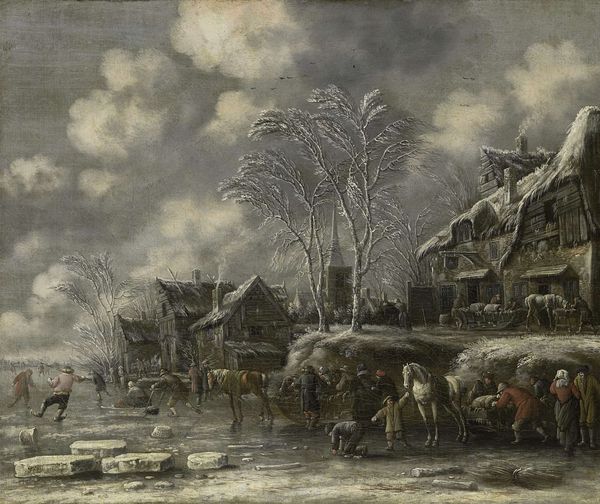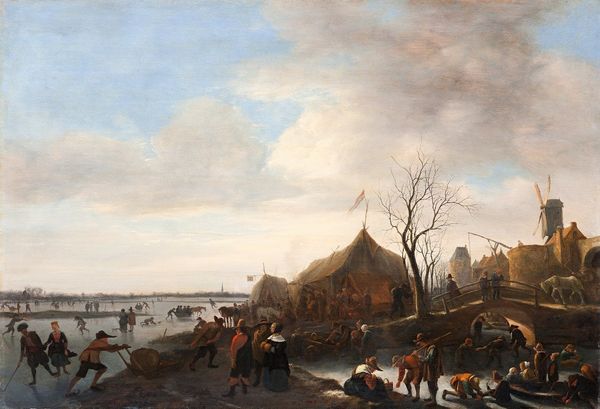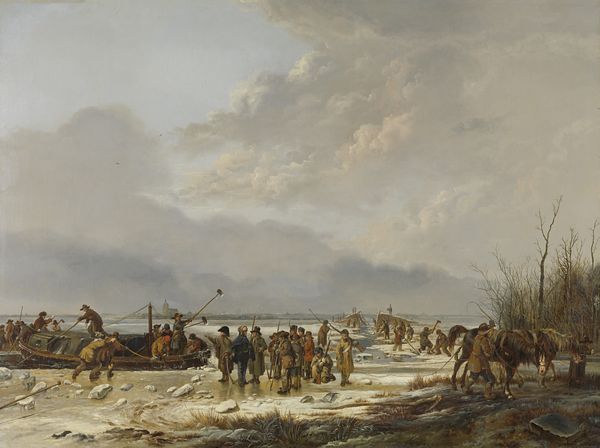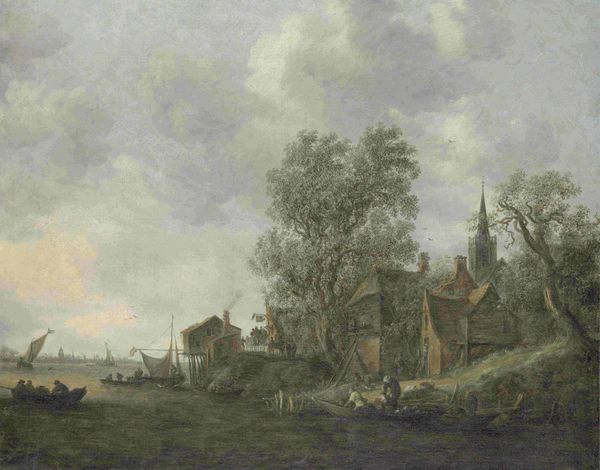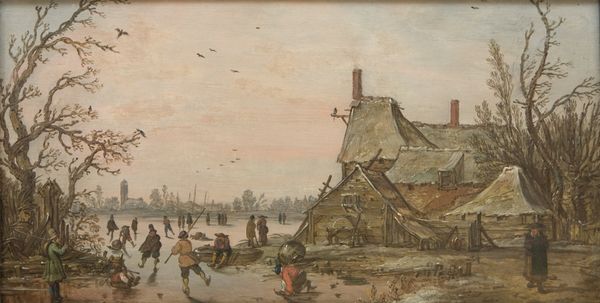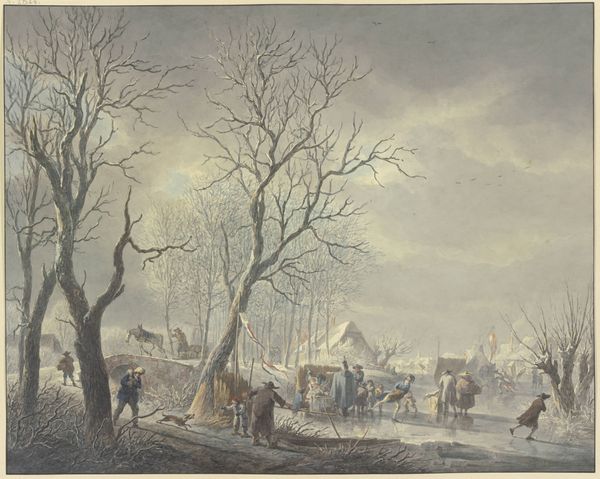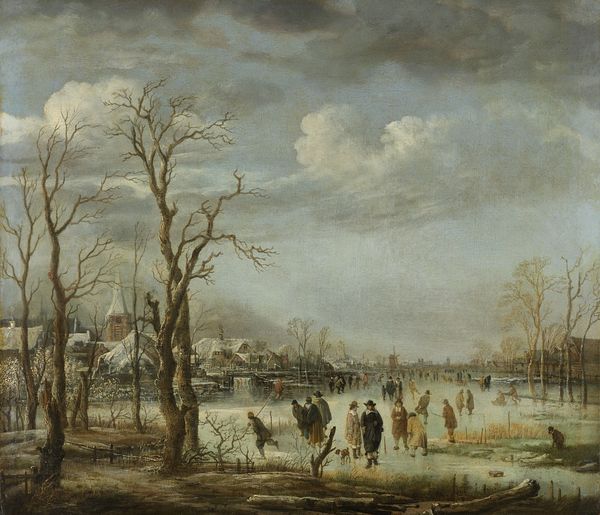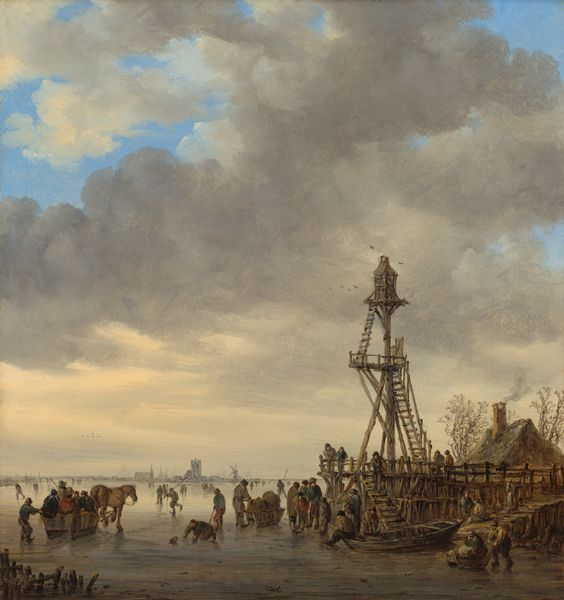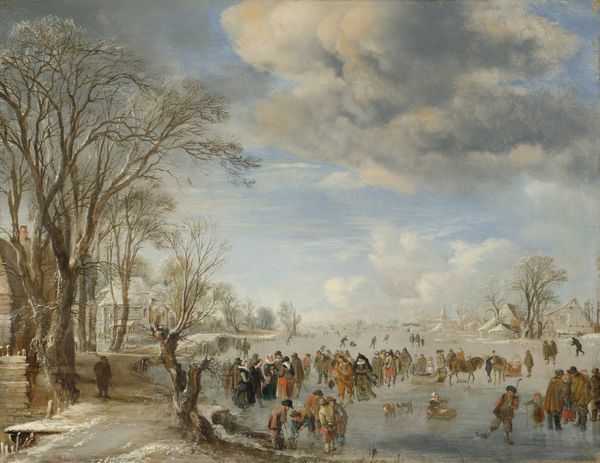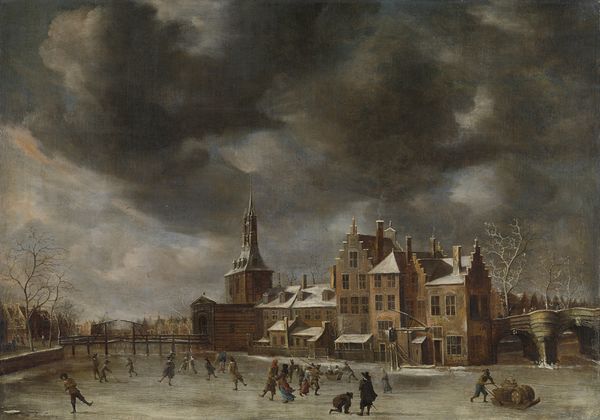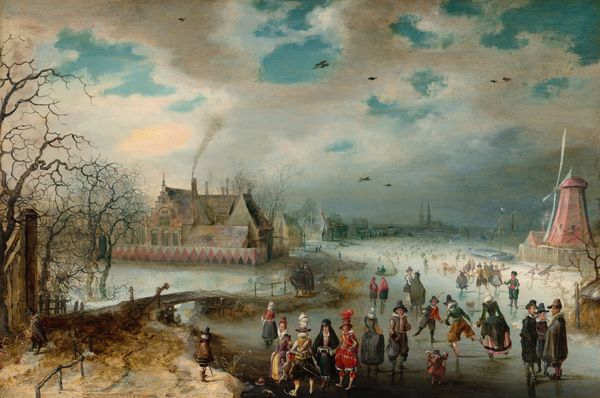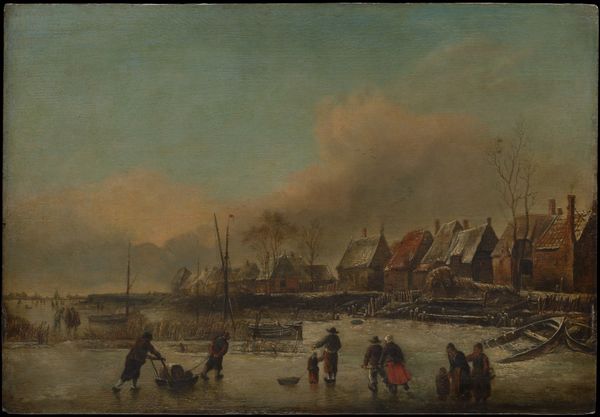
#
fantasy concept art
#
abandoned
#
character art
#
character design for game
#
derelict
#
character sketch
#
study
#
game concept
#
fantasy sketch
#
environment sketch
Dimensions: height 61 cm, width 83.5 cm, depth 8.5 cm
Copyright: Rijks Museum: Open Domain
Curator: This is "Enjoying the Ice," a painting from 1677 by Thomas Heeremans. It offers us a glimpse into everyday life in the Dutch Golden Age. Editor: It strikes me as both festive and bleak, actually. The frozen landscape feels vast and exposed, but then you have these clusters of people, all bundled up and seemingly engaged in lively activities. Curator: Indeed. Heeremans situates this scene within a specific historical context. The Dutch Republic experienced particularly harsh winters in the 17th century, and frozen waterways became communal spaces for transportation and leisure. These winter landscapes gained popularity, reflecting the changing climate and its impact on Dutch society. Editor: So, this isn't just about pretty scenery; it reflects how communities adapted and even thrived amidst challenging conditions. The canvas suggests that these gatherings weren't just spontaneous fun; they played a vital social function. Is that temporary structure on the left a market? Curator: That's a keen observation. That tent-like structure likely served as a temporary tavern or market stall, reflecting how economic activities were integrated into these frozen gatherings. The Dutch flag further symbolizes national pride and unity amidst winter's challenges. Editor: I notice how the muted palette reinforces this impression, and those gray-blue tones make you feel the chill! The composition also directs our attention towards the horizon where we can spot several windmills – how interesting! Curator: Yes, these windmills and distant buildings reinforce a distinctly Dutch cultural identity, connecting the scene to its geographical and socio-economic background. Art historians debate the extent to which these winter scenes reflect a sense of nostalgia. Were they intended as records of a time that was already perceived to be disappearing? Editor: Perhaps both a record and an idealization? Even then people were likely aware that community wasn't universally enjoyed, or evenly distributed. In this case, what seems joyful surely masked the experience of a grim socio-economic reality for some members of that society. Curator: Exactly! These scenes reflect not just celebrations, but how communities reorganized and found ways to navigate profound change during what were volatile years for the Republic. Editor: Exploring "Enjoying the Ice," therefore, offers more than a scenic escape; it prompts us to question the intersections between leisure, survival, national identity, and even economic disparities across Dutch society during that period. Curator: Absolutely, examining how a particular artwork responded to its own period and continues to resonate with our world is part of what we do in our studies and reflections. Thank you.
Comments
No comments
Be the first to comment and join the conversation on the ultimate creative platform.
